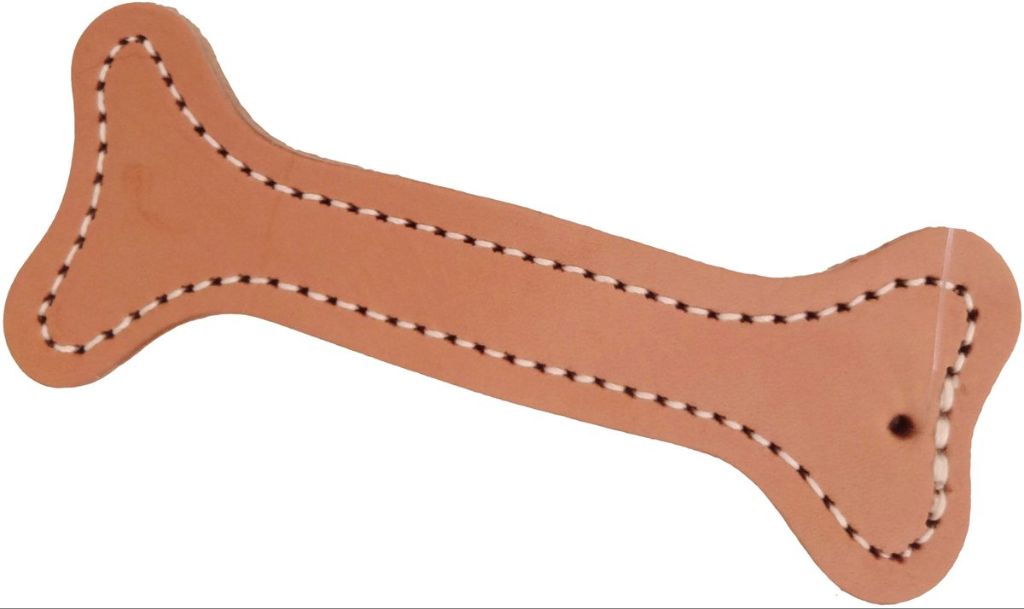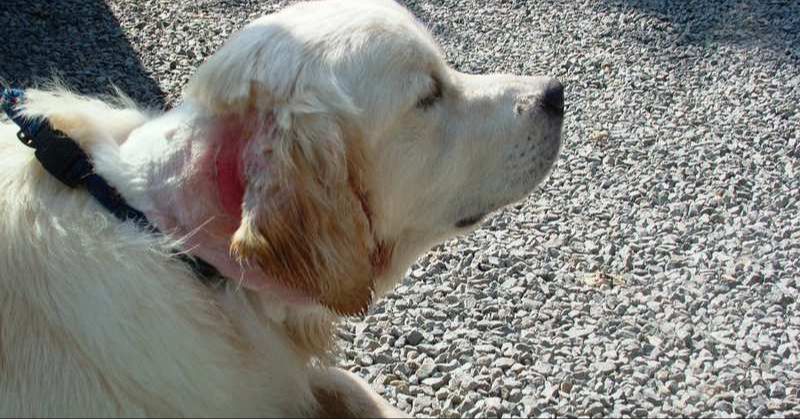Benefits of Dogs Chewing Leather
Leather chew toys and treats can provide several benefits for dogs when used properly. One of the main benefits is dental health. The act of chewing leather can help scrape away plaque and tartar on dogs’ teeth, keeping their teeth and gums cleaner (https://www.webmd.com/pets/dogs/dog-dental-treats). The abrasive texture of leather chews helps rub away bacteria and buildup. This reduces the risk of periodontal disease and other dental problems in dogs.
In addition to dental health, leather chews can help relieve a dog’s boredom and anxiety. Dogs have a natural instinct to chew, and providing appropriate chew toys satisfies this need for many dogs. Chewing gives dogs an enjoyable activity to focus on, which can help alleviate stress and destructive chewing behaviors stemming from boredom or anxiety (https://soopapets.com/blogs/dog-health/health-benefits-of-dog-dental-treats). Leather chews can provide long-lasting entertainment.
Furthermore, the act of chewing and gnawing itself has relaxing properties for dogs. It allows them to exercise their jaw muscles and work off energy in a calming way. Leather chews can provide this pleasurable chewing outlet and give dogs a relaxing way to self-soothe.

Risks of Dogs Chewing Leather
While leather chew toys can provide benefits, there are also potential risks to dogs chewing on leather that owners should be aware of.
One of the biggest dangers is the risk of choking. Leather chew toys can break off into small pieces that dogs may swallow. According to https://www.instachew.com/post/are-leather-chew-toys-good-for-dogs, dogs that bite off and swallow large chunks of leather chews without properly chewing them are at risk for choking hazards or gastrointestinal obstructions.
Another potential risk is exposure to harmful chemicals used in the leather tanning process. Some lower quality leather chew toys may contain traces of chemicals like chromium or azodyes. These chemicals could potentially leach out and be ingested by dogs. It’s important to only choose high quality leather chews from reputable manufacturers that use safe tanning methods.
Supervision is key when giving dogs any kind of chew toy to prevent excessive chewing and swallowing of pieces. Owners should monitor their dog’s behavior and take the chew away if they notice aggressive chewing or destruction of the toy.
Leather Chew Toys vs. Rawhide
Leather and rawhide chews are both popular options for dogs, but there are some key differences between the two materials. Leather is often considered the safer and more durable option.
Rawhide is made from the inner layer of cow or pig hides, pressed and formed into shapes while moist, then dried. The drying process makes rawhide very hard and tough. While this may make it last longer, it also makes rawhide more likely to cause choking or blockages when chewed and ingested by dogs (source).
Leather chews, on the other hand, are made from tanned and treated hides, so they are less rigid. Tanning makes leather more pliable and stronger. This makes leather chews more resistant to breaking off in chunks. Leather’s flexibility allows dogs to get cleaning action on their teeth without as high of a choking risk (source).
Choosing the Right Leather Chew
When selecting a leather chew for your dog, it’s important to choose one made from high-quality leather. Look for chews made from thick, single pieces of rawhide or leather rather than those made of many small pieces glued together, which can break off and pose a choking hazard (1).
The appropriate size of the chew depends on your dog’s size – smaller dogs should only be given small pieces they can chew, swallow and digest easily, while larger dogs can handle bigger pieces. Avoid giving small dogs large chews they may try to swallow whole (2).
It’s also essential to actively supervise your dog when giving any chew to prevent choking and make sure it lasts. Chews that are too small may be swallowed immediately, while very hard chews can damage teeth. Watch for aggressive chewing and remove the chew if your dog tries to break off and gulp down large chunks (3). With proper supervision and a quality leather chew suited to your dog’s size, chewing can be an enriching activity.
Leather Allergies in Dogs

Some dogs may be allergic to leather. Leather allergies in dogs are typically caused by an allergy to the chemicals used in processing leather, rather than an allergy to leather itself. Symptoms of a leather allergy can include irritation and inflammation around the neck, hair loss around the neck, changes in pigmentation around the neck, and raised bumps or rashes around the neck area.
If a dog has an allergy to leather, they will likely need to avoid leather chews and toys. An allergy test may be done by a veterinarian to confirm. Treatment usually involves removing the source of the allergy and using medications to manage symptoms. Anti-itch medication, antibiotics for any secondary infections, medicated shampoos, and steroids may be prescribed. In severe cases, immunotherapy or allergy shots can be considered to desensitize the dog to leather.
To prevent leather allergies, look for high-quality leather processed without harsh chemicals. Supervise your dog with any new chews or toys to watch for signs of irritation or discomfort. Discontinue use if any concerning symptoms develop.
Homemade Leather Chews
A great way to provide your dog with safe, long-lasting leather chews is to make them at home. You can use scrap leather pieces from old wallets, purses, belts, jackets, and more to create homemade chews.
When using recycled leather, be sure to inspect it closely and remove any parts that could be dangerous, such as buckles, metal rivets, etc. Also look for any signs of weakness or damage and avoid using those pieces. It’s safest to stick to thick, sturdy leather scraps.
To make basic homemade leather chews:
- Cut the leather into strips or shapes with clean, sharp scissors or a utility knife.
- Avoid small pieces that could pose a choking hazard.
- Round off any sharp corners or edges.
- Clean off any residues with mild soap and water.
- Allow the leather strips to dry fully before giving to your dog.
You can add flavor by soaking the leather in broth, applying a thin coat of peanut butter, or sprinkling on powdered bouillon before drying. Store homemade leather chews in an airtight container in the refrigerator.
Check on your dog while they enjoy homemade chews and take them away once they become small enough to swallow. Never leave your dog unsupervised with any chew item.
For a simple recipe and instructions, see: https://kolchakpuggle.com/2014/03/fruit-veggie-leather-dehydrator-dog-treats.html
Commercially Available Leather Chews
There are many brands that produce high-quality leather chews for dogs. Some popular options include:
Tall Tails – This company uses free-range grass-fed cow hides to make their leather chews. All products are sourced and made in the USA. Tall Tails leather undergoes a unique tanning process to maintain strength and flexibility.
Ethical Pet – Their DuraFused line uses thicker premium leather that is knotted for extra durability. The leather is a byproduct of the meat industry. Their products are global animal partnership certified.
Pettom – Pettom makes their leather chews from premium buffalo and cow hides. The leather is non-toxic and undergoes a compression process to enhance durability. All products are made in the USA.
When choosing a commercial leather chew, look for brands that use ethically sourced hides and that adhere to safety standards. Seek options made in the USA from thicker, premium leather for durability.
Proper Use of Leather Chews
When giving your dog a leather chew toy or treat, it’s important to use them properly to ensure your dog’s safety. Here are some tips for the proper use of leather chews:

Give only as directed. Follow any guidelines from the manufacturer about the appropriate size and type of leather chew for your dog. Don’t exceed the recommended daily amount.
Take away when small pieces start breaking off. Once the leather starts breaking down into smaller pieces, retrieve those pieces from your dog. Small leather bits can present a choking hazard if swallowed.
Don’t leave unsupervised for extended periods. Even though leather is generally safer than rawhide or other materials, you still don’t want to leave your dog alone with any chew for too long. Keep an eye on your dog anytime they have a leather chew.
Swap out for a new chew when worn down. Allowing your dog to continue chewing on a worn down nub of leather increases their risk of swallowing pieces. Replace with a fresh chew periodically.
Avoid letting your dog have leather shoes, belts, furniture etc. Stick to chews specifically designed and produced for dog consumption. Other household leather items can contain chemicals or dyes unsafe for dogs if ingested.
With proper precautions, supervision, and care, leather chews can be a safer alternative to rawhide. But always monitor your dog anytime they are chewing on a treat or toy to prevent overconsumption or choking hazards. Only provide size-appropriate leather chews designed for dog use.
Signs Your Dog Shouldn’t Have Leather
If your dog experiences negative effects from chewing on leather, it’s a sign they should avoid it. Some signs your dog shouldn’t be given leather chews include:
- Diarrhea – Loose, watery stool can indicate irritation in the digestive tract. Leather that is too hard or pieces that are too large can cause diarrhea in dogs. According to WebMD, any abrupt food change can upset a dog’s digestive system.
- Vomiting – Throwing up undigested pieces of leather could mean the chew is too difficult to break down. Vomiting can also be a sign of a blockage if large chunks were swallowed. Per the AKC, rawhide chews do not digest easily.
- Refusal to eat – If your dog stops eating their regular food, leather chews may be upsetting their stomach. Lack of appetite can signify gastrointestinal issues.
- Destructive chewing – If your dog tries to destroy and ingest leather chews quickly rather than gnawing gently, the chews may present a choking risk. Aggressive chewing of leather could also indicate boredom in some dogs.
Any sudden digestive upset like diarrhea or vomiting after giving your dog a leather chew could be a clue that their stomach cannot tolerate it. Leather chews should also be avoided if they seem to create obsessive behavior. Monitor your dog’s chewing habits closely for signs of trouble.
Summary
Leather chew toys can provide some benefits for dogs such as helping satisfy their natural chewing instinct, keeping their teeth clean, and providing mental stimulation. However, rawhide and real leather also come with some risks such as digestive blockages or tearing off pieces that are choking hazards.
The key is to choose high-quality leather chew toys that are digestible and properly sized for your dog. Avoid any that have dangerous chemicals or preservatives. Also be sure to monitor your dog closely when first introducing a leather chew to make sure they are using it properly. Check the condition of the chew toy regularly and replace when worn.
With proper selection and supervision, leather chews can be a safe way to provide dogs an outlet for their chewing urge. But they require more care and attention than some other chew toys. Consider your individual dog’s chewing habits and consult your vet if you have any concerns about leather chews causing harm.